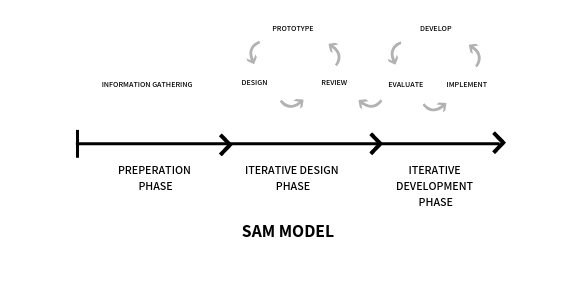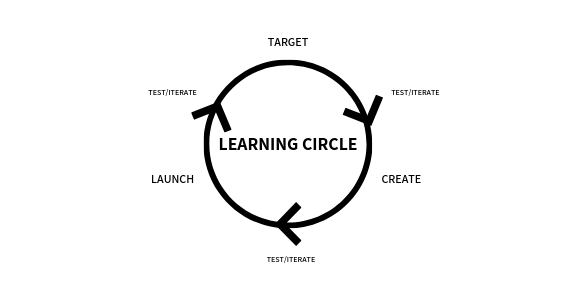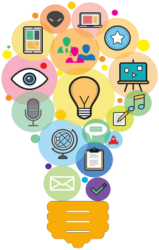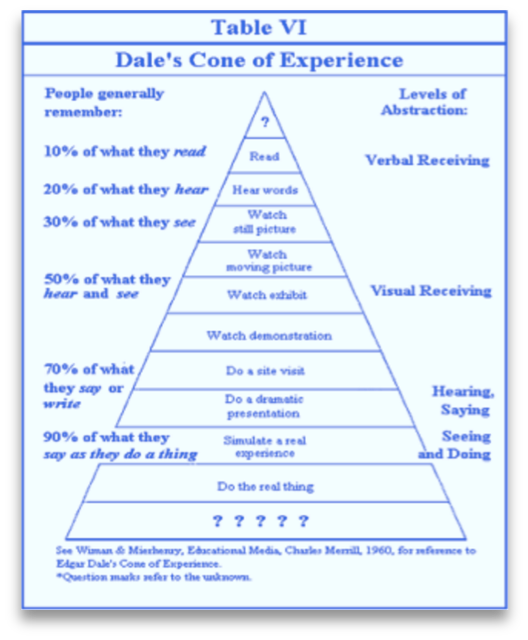By: Alyssa Haffejee
Instructional materials are tools that can be used to support teaching and learning. They are any resources used to help teachers teach, like a textbook or workbook. When designing instructional material, you want the content to be designed to promote learning. By following these best practices, you can improve your instructional material for better retention.
Choose an instructional design model
Follow a pre-existing design model to help shape your content in a way that will best suit your material and your readers.
ADDIE Model
The ADDIE model consists of five phases:
- Analysis
- Design
- Development
- Implementation
- Evaluation
The ADDIE model is used to create learning experiences, courses, and instructional content.
The first phase is the analysis phase. It defines the instructional problem, the instructional goals, the learning metrics, and the reader profile. Next is the design phase where the learning objectives, method of instruction, and content are defined. Then comes the development phase, which involves taking the information in the design phase and developing the content and learning interactions. The implementation phase is when the content and materials are input in to the Learning Management Systems or given to the trainers. Finally, the evaluation phase determines the effectiveness and success of the material created.
The ADDIE best fits organizations that adopt a waterfall methodology.
Sam Model
The SAM model develops instructional material through iterations. It is an agile process created for performance-driven learning. The model is broken down into three large phases: the preparation phase, the iterative design phase, and the iterative development phase.

The preparation phase is where background information is collected. Next is the iterative design phase. It starts with a collaborative brainstorming meeting then rotates through design, prototype, and review stages. The third phase is iterative development. It involves cycling through the developmental, implementation, and evaluation stage.
Unlike the ADDIE model, the SAM model is a better instructional design model for organizations that encourage flexible processes and fast feedback.
Learning Circle Framework
The Learning Circle Framework includes three phases: target, create, and launch. Much like the SAM model, the Learning Circle Framework is an agile-friendly model.

The target phase defines the focus of the content, the audience, and any other information that should be considered when creating the material. Then is the create phase where the learning materials are created, tested, and revised. Finally, there is the launch phase, which is concerned with material delivery.
Chunk your information
Chunking information is when you group information into bite-sized amounts. It enhances comprehension and memory. By organizing information into manageable chunks, you will help your audience follow and remember the lesson.
Be precise
What do you want your audience to learn from the material? This question should help pinpoint exactly what you should and shouldn’t include.
Follow Mayer’s 12 multimedia design principles
Richard E. Mayer defines 12 principles that should be followed when creating multimedia presentations. The 12 principles are founded on how people learn better in multimedia lessons such as e-learning materials or PowerPoint presentations.
- Coherence: Remove extraneous words, pictures, and sounds.
- Signaling: Add cues that highlight the organization of the material.
- Redundancy: Add graphics and narration.
- Spatial contiguity: Present corresponding words and images near each other.
- Temporal contiguity: Present words and images simultaneously.
- Segmenting: Present information in user-paced segments.
- Pre-training: State the names and characteristics of the lesson’s main concepts.
- Modality: Add graphics and narration.
- Multimedia: Add words and images together.
- Personalization: Use a conversational style.
- Voice: Use a friendly human voice.
- Image: Don’t add a photograph of the speaker.
Conclusion
Learning is an individual process. We all have different learning styles and preferences. Give your audience the best possible opportunity to learn by following these best practices when designing instructional material.
References
“Instructional Design Models”. Instructionaldesigncentral.Com, 2018, https://www.instructionaldesigncentral.com/instructionaldesignmodels. Accessed 3 Dec 2018.
“Learning Circle Framework”. Instructionaldesigncentral.Com, 2018, https://www.instructionaldesigncentral.com/learning-circle-framework. Accessed 3 Dec 2018.
“So Who Is SAM? – Friesen, Kaye And Associates”. Friesen, Kaye And Associates, 2018, https://www.fka.com/so-who-is-sam/. Accessed 3 Dec 2018.
Mayer, Richard E. Multimedia Learning. 2nd ed. Cambridge: Cambridge University Press, 2009.
Alyssa Haffejee describes herself as a professional brunch eater, and graduate student in the technical communications program at Seneca college. She is about to begin her Work Integrated Learning semester at Nuclear Waste Management Organization as a developmental communications student. She also has an undergraduate degree in professional writing from York University.



